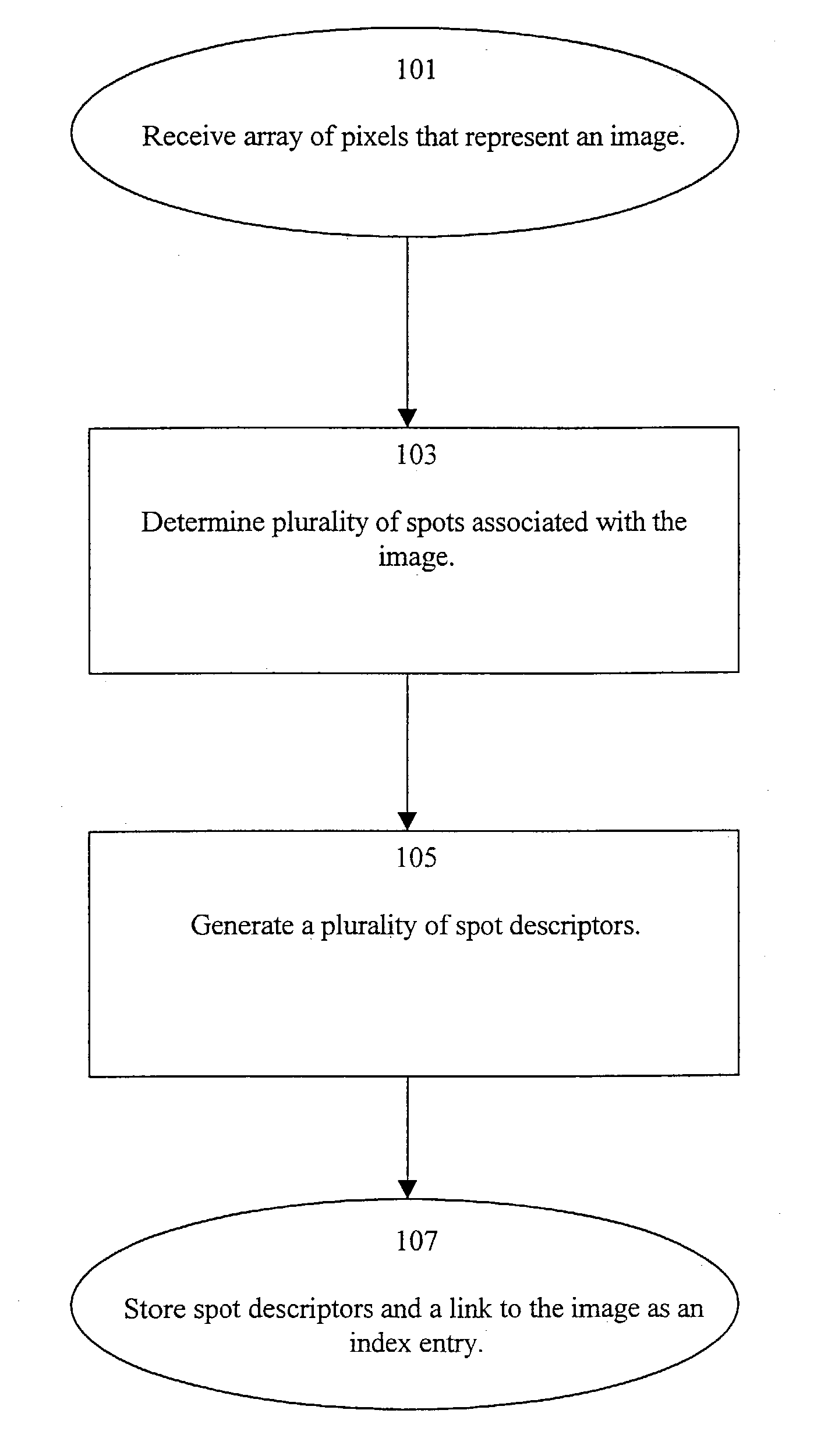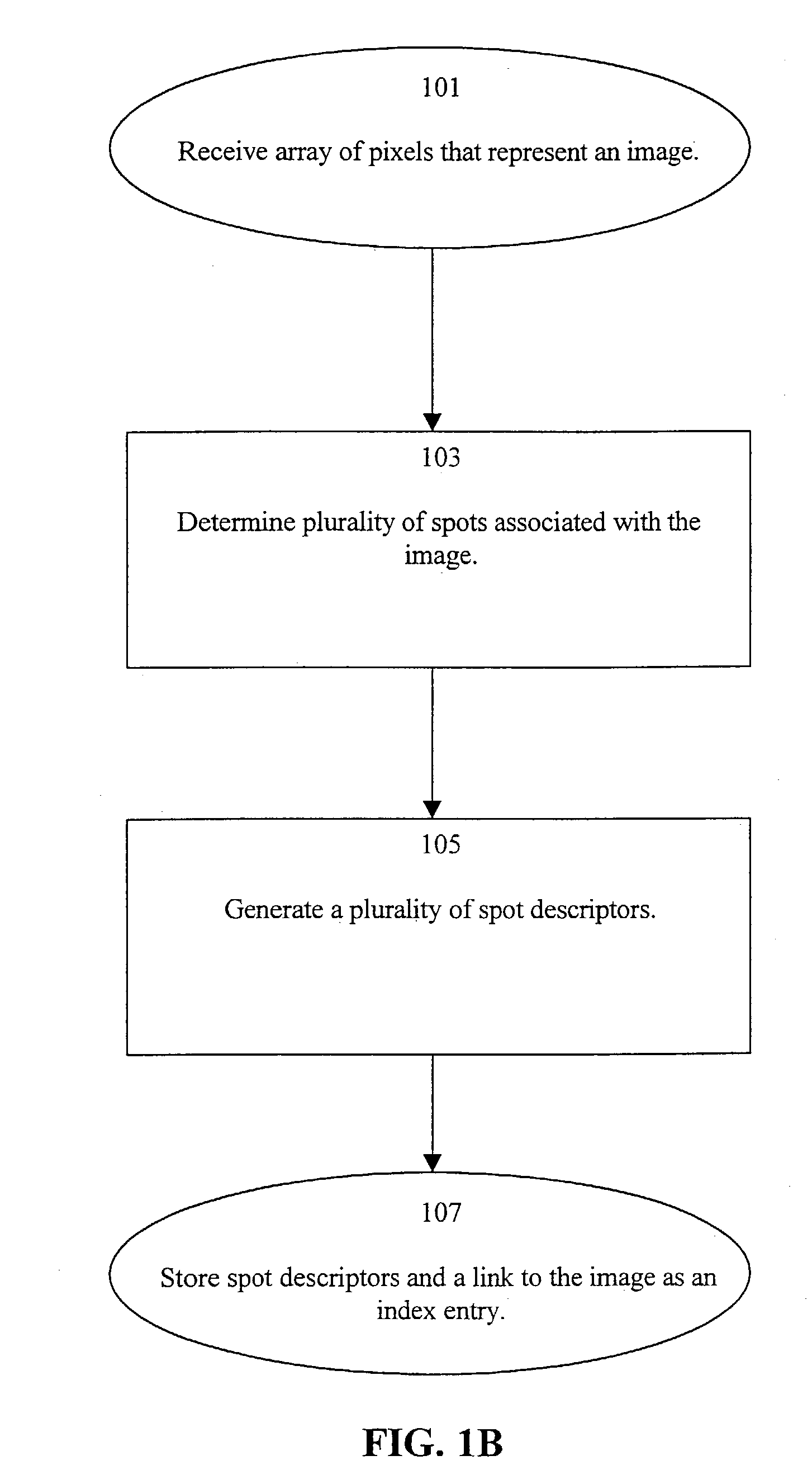Perceptual similarity image retrieval
a similarity image and retrieval technology, applied in the field of visual information analysis and management, can solve the problems of high probability of missing many important features of image index entries, high difficulty in identifying images, etc., and achieves the effect of high success rate, insensitive to irrelevant details and nois
- Summary
- Abstract
- Description
- Claims
- Application Information
AI Technical Summary
Benefits of technology
Problems solved by technology
Method used
Image
Examples
Embodiment Construction
[0037]The present invention provides a system and method for indexing an image collection that support the identification of those images that have features which are perceptually similar to those of a query image. According to the present invention, a plurality of image representations is received and stored in a database. The image representations may conveniently be conventional RGB data for a computer monitor, though other formats such as arbitrary color models including CIE XYZ, HSV, HLS, and YIQ color spaces and CMY and CMYK colorant descriptions can be processed in similar manner. Indexing of the image collection is performed to generate a searchable index. The entries of the index each comprise metadata that identifies the various features of a corresponding image. This is preferably implemented by first converting received data to a perceptually uniform space, such as the standard CIELUV color space defined by the Commission Internationale de l'Eclairage (CIE) in 1976, in c...
PUM
 Login to View More
Login to View More Abstract
Description
Claims
Application Information
 Login to View More
Login to View More - R&D
- Intellectual Property
- Life Sciences
- Materials
- Tech Scout
- Unparalleled Data Quality
- Higher Quality Content
- 60% Fewer Hallucinations
Browse by: Latest US Patents, China's latest patents, Technical Efficacy Thesaurus, Application Domain, Technology Topic, Popular Technical Reports.
© 2025 PatSnap. All rights reserved.Legal|Privacy policy|Modern Slavery Act Transparency Statement|Sitemap|About US| Contact US: help@patsnap.com



